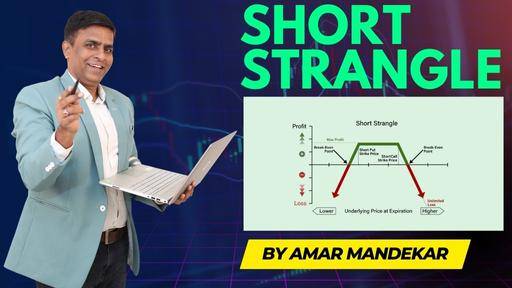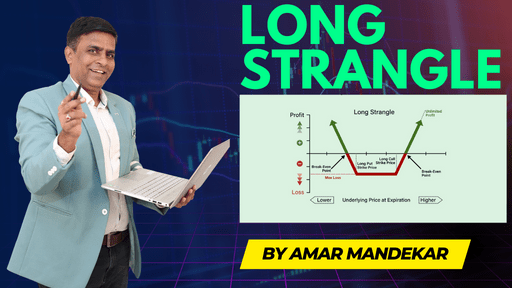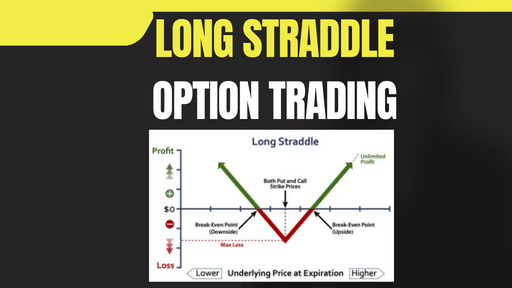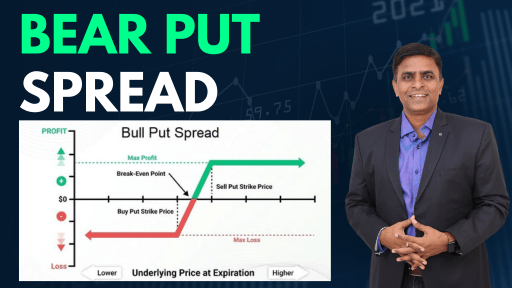Table of Contents
Introduction:
There are thousands of technical indicators traders can utilize in intraday option trading depending on their trading setup and the type of security to be traded .I started this article on the Top 5 Best Indicators for Options Trading in India, we must know about what is Options trading in the stock market.
Welcome to the exciting world of option trading, where fortunes are made and lost in the blink of an eye. As an investor, you are constantly seeking an edge, a reliable tool that can guide you towards profitable trades with precision and confidence.
KeyPoint:
- Options traders often rely on momentum indicators to identify overbought and oversold conditions due to the time constraints imposed by options’ limited duration.
- The Relative Strength Index (RSI) is a popular momentum indicator for options traders. Values above 70 suggest overbought levels, while values below 30 indicate oversold conditions.
- Bollinger Bands are commonly used by options traders to measure volatility. A price move outside of the bands can signal a potential reversal, allowing traders to take appropriate positions.
- Implied Volatility: Implied Volatility (IV) is a crucial factor in determining the price of an option. Traders use IV to evaluate whether an option is overpriced or underpriced compared to historical volatility. Higher IV leads to higher option premiums.
- Open Interest: Open Interest (OI) represents the number of outstanding contracts for a particular option. It helps traders understand market sentiment. Increasing OI along with the price of an option indicates bullishness, while increasing OI with decreasing price indicates bearishness.
- Volume: Volume is the total number of contracts traded during a given period. It indicates the liquidity of a particular option. High volume suggests significant interest and easier entry and exit, while low volume indicates less interest and potential difficulties in buying or selling options.
- Moving Average: Moving averages are used to identify market trends and support/resistance levels. Traders look for intersections of two moving averages as a signal to enter or exit a trade. Moving averages can help determine the overall trend of the market.
RSI
- RSI measures the speed and change of price movements on a scale from 0 to 100.
- The traditional levels for RSI interpretation are 75 for overbought and 25 for oversold conditions. However, these levels can be adjusted based on the security or market being analyzed.

- During strong trends, RSI can remain in the overbought or oversold zone for extended periods, so it’s important to consider the overall market context.
- RSI can form chart patterns such as double tops and bottoms, as well as trend lines, which may not be visible on the underlying price chart.
- In an uptrend, RSI tends to stay between 60 to 80. In a downtrend, RSI tends to stay between 30 to 10. These ranges may vary depending on the settings and underlying trend strength.
- Divergences between RSI and price movements can signal potential price reversals. For example, if prices make a new high or low that isn’t confirmed by RSI, it could indicate a reversal is likely.

- Two specific RSI patterns are Top Swing Failure and Bottom Swing Failure. A Top Swing Failure occurs when RSI makes a lower high followed by a move below a previous low. A Bottom Swing Failure occurs when RSI makes a higher low followed by a move above a previous high.
- The RSI formula is calculated as follows: RSI = 100 – [100 / (1 + (Average of Upward Price Change / Average of Downward Price Change))]
Bollinger Bands
Bollinger Bands are popular technical analysis tool used by traders to identify trends and volatility. They consist of three lines-the middle line is a 20 SMA and the upper and lower bands are two standard deviations (SD) away from the middle line. It is one of the best indicators for option trading.
- Visualize Volatility: Bollinger Bands are dynamic price envelopes that adjust to volatility swings in the market. When the bands tighten, it indicates low volatility, signaling a potential sharp price move. Conversely, when the bands separate widely, it suggests increased volatility and a possible trend reversal.

- Identify Profit Targets: Traders can use Bollinger Bands to identify potential profit targets. When the price bounces off the lower band and crosses above the moving average, the upper band becomes the profit target. This strategy helps capture potential price swings within the bands’ envelope.
- Trend Confirmation: Bollinger Bands can provide confirmation of a strong trend. When the price moves outside the bands, it suggests a continuation of the trend. However, if prices immediately move back inside the bands, it may negate the strength of the trend.
PCR (Put Call Ratio)
- Market Sentiment Gauge: The put-call ratio is a widely used measurement by investors to gauge the overall mood of the market. It helps determine whether the sentiment is bearish or bullish based on the buying activity of put and call options.
- Bearish vs. Bullish Signals: When traders buy more put options than call options, it indicates a rise in bearish sentiment. Conversely, if they buy more call options than put options, it suggests a bullish market outlook.
- Calculating the Ratio: The put-call ratio is calculated by dividing the number of traded put options by the number of traded call options. An average put-call ratio of 0.7 for equities is considered a good basis for evaluating sentiment.

- Interpreting the Ratio: A rising put-call ratio (above 0.7 or exceeding 1) suggests bearish sentiment, indicating that more traders are buying puts and speculating on a market decline. A falling put-call ratio (below 0.7 and approaching 0.5) is considered a bullish indicator, as more calls are being bought. PCR range between 0.9 to 1.10 act as sideways action.
- Contrarian Indicator: The put-call ratio can be used as a contrarian indicator. Extremely high ratios may indicate an overly bearish market and potentially signal a buying opportunity, while extremely low ratios may suggest an overly bullish market and a potential pullback.
Open Interest & Volume
- Understanding Open Interest: Open Interest (OI) represents the number of outstanding contracts for a particular option that have not been exercised, closed, or expired. It provides valuable insight into market sentiment and is a key indicator for options traders.
- Market Sentiment: Increasing Open Interest along with the price of an option indicates bullish sentiment among traders for that stock or index. Conversely, if Open Interest is increasing while the price of an option is decreasing, it suggests bearish sentiment.

- Indicator for Option Trading: Open Interest is considered one of the best indicators for option trading. By analyzing changes in Open Interest, traders can gain insights into the prevailing market sentiment and make informed trading decisions.
- Importance of Volume: Volume refers to the total number of contracts traded during a specific period. It is an essential indicator as it helps traders assess the liquidity of a particular option.
- Liquidity and Trading Ease: High volume indicates significant interest in an option, making it easier for traders to enter and exit positions. On the other hand, low volume suggests lower interest, which may result in challenges when buying or selling options.
MACD
- Trend Trading Indicator: The MACD is a momentum oscillator primarily used for trading trends. It consists of two lines that oscillate without boundaries on the chart. Traders use the crossover of these lines to generate trading signals similar to a two moving average system.
- Bullish and Bearish Signals: When the MACD line crosses above zero, it is considered bullish, while crossing below zero is seen as bearish. Additionally, when the MACD turns up from below zero, it is considered bullish, and when it turns down from above zero, it is considered bearish.
- Crossover Signals: The MACD line crossing from below to above the signal line is considered a bullish signal. The further below the zero line, the stronger the signal. Conversely, when the MACD line crosses from above to below the signal line, it is considered bearish. The further above the zero line, the stronger the signal.

- Whipsaw and Trading Ranges: During trading ranges, the MACD may experience whipsaw, with the fast line crossing back and forth across the signal line. Traders typically avoid trading during such situations or may close positions to reduce portfolio volatility.
- Divergence Confirmation: Divergence between the MACD and price action is a stronger signal when it confirms the crossover signals. Traders pay attention to instances where the MACD and price movements move in opposite directions, as it can provide valuable insights into potential trend reversals.
Frequently Asked Questions:
Q: What are the best indicators for intraday options trading?
A: The Top 5 Best Indicator for intraday Option trading are RSI, Bollinger Bands, MACD, PCR and OI with Volume.
Q: Which is the best option indicator in Zerodha?
A: Supertrend with EMA are Best common option indicator in Zerodha.
Q: What is the majority rule indicator?
A: In Indicator time frame plays an important role. For entry, exit and stop loss indicators setting plays an important role.
Conclusion:
In conclusion, options trading in the stock market can be an exciting and lucrative endeavor. To enhance your trading success, it is important to utilize reliable indicators that provide valuable insights into market sentiment and trends. Here are the top five best indicators for options trading in India:
- Relative Strength Index (RSI): The RSI is a popular momentum indicator that helps identify overbought and oversold conditions. By understanding RSI levels and divergences, traders can gain insights into potential price reversals and trend strength.
- Bollinger Bands: These dynamic price envelopes assist traders in visualizing volatility and potential trend reversals. When the bands tighten, it indicates low volatility, while wider separations suggest increased volatility. Bollinger Bands also help identify profit targets and confirm strong trends.
- Implied Volatility (IV): IV plays a crucial role in determining the price of an option. Traders can evaluate whether an option is overpriced or underpriced compared to historical volatility. Higher IV leads to higher option premiums, and understanding IV can help make informed trading decisions.
- Open Interest (OI) and Volume: OI represents the number of outstanding contracts, while volume measures the total number of contracts traded. These indicators provide insights into market sentiment and the liquidity of specific options. Increasing OI along with the price of an option indicates bullishness, while increasing OI with decreasing price suggests bearishness.
- Moving Average Convergence Divergence (MACD): The MACD is a momentum oscillator used to identify trends. Crossovers and divergences between the MACD lines generate trading signals. Traders can use the MACD to confirm trends and potential trend reversals.
By incorporating these indicators into your options trading strategy, you can gain a competitive edge and improve your trading performance. However, it is important to remember that no indicator is foolproof, and thorough analysis and understanding of market dynamics are essential. Keep learning, adapting, and refining your approach to achieve success in the options trading arena.
Disclaimer:
The information provided in this blog post is for educational and informational purposes only. It should not be construed as financial advice or a recommendation to buy or sell any securities. Always do your own research and consult with a qualified financial advisor before making investment decisions.
Also Read : Mastering Best Option Trading: Unleashing the Power of PCR Ratio in Nifty and Bank Nifty.











